#civil rights history
Text
“It can't be a Black man'. But ... but that's the whole point of the story!" Feldstein sputtered.”

Judgement Day (1953)
The story, by writer Al Feldstein and artist Joe Orlando, was a reprint from the pre-Code Weird Fantasy #18 (April 1953), inserted when the Code Authority had rejected an initial, original story, "An Eye For an Eye", drawn by Angelo Torres, but was itself also "objected to" because of "the central character being Black".
The story depicted a human astronaut, a representative of the Galactic Republic, visiting the planet Cybrinia, inhabited by robots. He finds the robots divided into functionally identical orange and blue races, one of which has fewer rights and privileges than the other. The astronaut determines that due to the robots' bigotry, the Galactic Republic should not admit the planet until these problems are resolved. In the final panel, he removes his helmet, revealing himself to be a Black man.
As Diehl recounted in Tales from the Crypt: The Official Archives: This really made 'em go bananas in the Code czar's office. "Judge Murphy was off his nut. He was really out to get us", recalls [EC editor] Feldstein. "I went in there with this story and Murphy says, 'It can't be a Black man'. But ... but that's the whole point of the story!" Feldstein sputtered. When Murphy continued to insist that the Black man had to go, Feldstein put it on the line. "Listen", he told Murphy, "you've been riding us and making it impossible to put out anything at all because you guys just want us out of business". [Feldstein] reported the results of his audience with the czar to Gaines, who was furious [and] immediately picked up the phone and called Murphy. "This is ridiculous!" he bellowed. "I'm going to call a press conference on this. You have no grounds, no basis, to do this. I'll sue you". Murphy made what he surely thought was a gracious concession. "All right. Just take off the beads of sweat". At that, Gaines and Feldstein both went ballistic. "Fuck you!" they shouted into the telephone in unison. Murphy hung up on them, but the story ran in its original form
#comics#comic history#Sci fi#ec comics#judgement day#civil rights#civil rights history#civil rights movement
157 notes
·
View notes
Text

Gordon Parks (American, 1912-2006) • American Gothic • 1942 • Copyright: The Gordon Parks Foundation • Courtesy The Gordon Parks Foundation and Jack Shainman Gallery, New York
#art#fine art photography#american photographer#gordon parks#black history month 2024#black and white photography#social realism#photo journalist#photo portrait#american culture#civil rights history#pagan sphinx art blog#african american artist#black artist#documentary photojournalism
25 notes
·
View notes
Text
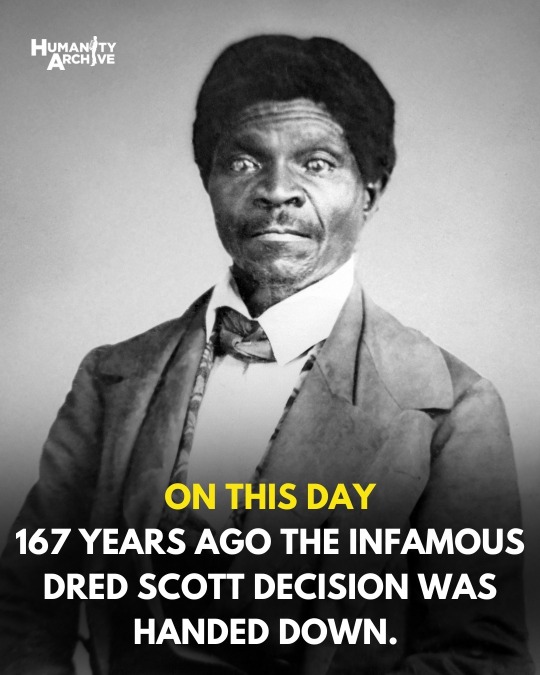
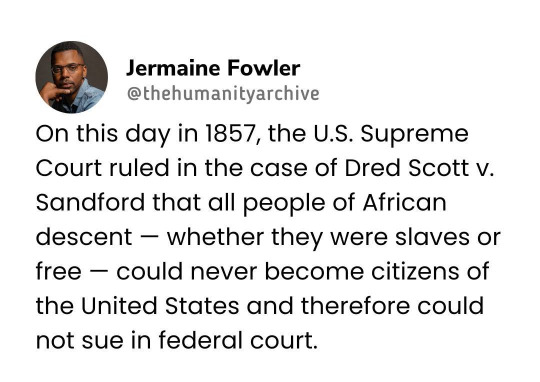

#racism#white racial hatred#white supremacy#white evil#dred scott v. sandford#u.s. supreme court#citizenship rights#racial discrimination#legal precedent#civil rights history#slavery#judicial activism#constitutional interpretation
16 notes
·
View notes
Text
Today i learned three things:
1. Claudette Colvin credited her history teacher's lessons on black women throughout history with inspiring her act of civil disobedience, which helped drive the Montgomery Bus Boycotts
2. When the police arrested 16-year-old Claudette, they also charged her with assault. This fraudulent charge was not expunged from her record until 2021.
3. Claudette Colvin IS STILL ALIVE. She is 84 years old.
#civil rights#civil disobedience#civil rights history#black history#claudette colvin#montgomery bus boycott#history#american history#20th century history
26 notes
·
View notes
Photo

On This Day in New York City History February 20, 1895: Former slave, abolitionist and civil rights advocate Frederick Douglass (February 1818 - February 20, 1895) passes away at the age of 77 or 78.
Douglass escaped slavery via the Underground Railroad arriving in NYC in 1838. Douglass would figure heavily in the history of NYC's abolition movement leading up to and during the Civil War. Douglass gave a series of speeches at Cooper Union including The Proclamation and the Negro Army which was given on February 3, 1863.
Post Civil War, Douglass continued to work for the freedom of not only blacks but of women in the areas of voting rights and would lend his support to Ida B. Wells' anti-lynching campaign.
Douglass would pass away at either the age of 77 or 78 in Washington D.C.
#FrederickDouglass #UndergroundRailroad #BlackHistory #BlackStudies #BlackHistoryMatters #AfricanAmericanHistory #AfricanAmericanStudies #CivilRightsHistory #NewYorkHistory #NYHistory #NYCHistory #History #Historia #Histoire #Geschichte #HistorySisco
https://www.instagram.com/p/Co55GyMuygs/?igshid=NGJjMDIxMWI=
#Frederick Douglass#Underground Railroad#Black History#Black Studies#Black History Matters#African American History#African American Studies#Civil Rights History#New York History#NY History#NYC history#History#Historia#Histoire#Geschichte#HistorySisco
51 notes
·
View notes
Text

“Tom Ricks’ Waging a Good War is first of all, a superb account of the Civil Rights Movement in the United States from 1954 to 1968. Equally noteworthy are Ricks’ deep military analyses and reflections on the campaigns and battles fought by African Americans, many of whom were World War II veterans, to achieve ‘a genuine democracy’ in America. Finally Ricks’ most recent work is a great read, insightful, enjoyable, and informative. Highly recommended.”
19 notes
·
View notes
Text
I'm reading about Desegregation and Busing in Boston for my college history course
Nothing makes me facepalm harder than the way white Americans reacted to the civil rights movement
Leave it to white people to throw an 'I'm taking my ball and going home' tantrum over...
*checks notes*
... black and white children going to the same free public schools
#civil rights#racism#history#black history#civil rights history#american racsim#civil rights movement
5 notes
·
View notes
Text
Frederick Douglass-”The Narrative of the Life of Frederick Douglass"
My term of actual service to Mr. Edward Covey ended on Christmas day, 1833. The days between Christmas and New Year’s day are allowed as holidays, and, accordingly, we were not required to perform any labor, more than to feed and take care of the stock. This time we regarded as our own, by the grace of our masters; and we therefore used or abused it nearly as we pleased.
Those of us who had families at a distance, were generally allowed to spend the whole six days in their society. This time, however, was spent in various ways. The staid, sober, thinking and industrious ones of our number would employ themselves in making corn-brooms, mats, horse-collars, and baskets; and another class of us would spend the time in hunting opossums, hares, and coons. But by far the larger part engaged in such sports and merriments as playing ball, wrestling, running footraces, fiddling, dancing, and drinking whisky; and this latter mode of spending the time was by the far the most agreeable to the feelings of our masters.
A slave who would work during the holidays was considered by our masters as scarcely deserving them. He was regarded as one who rejected the favor of his master. It was deemed a disgrace not to get drunk at Christmas; and he was regarding as lazy indeed, who had not provided himself with the necessary means, during the year, to get whisky enough to last him through Christmas.”


#frederick douglass#Life and Times of Frederick Douglass#slavery#1619 project#abolitoinists#abolitionist movement#civil rights movement#civil rights act#Civil Rights History#black history#civil war#slave narratives#history of slavery#black lives movement#black lives matter#fugitive slaves#Fugitive Slave Act#fugitives slave law#christmas
13 notes
·
View notes
Text
🎉IT'S ELIZABETH PERATROVICH DAY
She was the Tlingit Civil Rights Leader responsible for the first (US) anti-discrimination law of the 20th century, which passed in 1945!
“Have you eliminated larceny or murder by passing a law against it? No law will eliminate crimes, but at least you, as legislators, can assert to the world that you recognize the evil of the present situation and speak your intent to help us overcome discrimination.”

Elizabeth Peratrovich, Ḵaax̲gal.aat, was a member of the Lukaax̱.ádi clan under the Raven moeity. Her Tlingit name means "person who packs for themselves."
Elizabeth held the position of Grand President of the Alaska Native Sisterhood (ANS), a partner organization of the Alaska Native Brotherhood (ANB). Founded in 1912 to address racism against Alaska Native peoples in Alaska, the ANB is one of the oldest Native-led Civil Rights Organizations in the world, followed closely by the ANS, established just three years later.

A restaurant in Juneau, Alaska, in 1908, advertises that its staff is White only. The Nelson Act (1905) had passed in Alaska three years earlier, segregating education systems between Whites and Alaska Natives. Mixed children weren't initially allowed in school, but this changed thanks to an ANB member. Playgrounds, theaters, and other public places were also segregated.
Today honors the fateful day she took the Senate floor and swayed the overtly racist Senate to pass the Alaska Equal Rights Act of 1945. This law made Alaska the first Territory in the United States to abolish Jim Crow laws.
youtube
"Fighter in Velvet Gloves: Alaska Civil Rights Hero Elizabeth Peratrovich" (2021). Tlingit Author Ann Boochever reads from her book, which was written in collaboration with Peratrovich's family. Skip to 38:46 in the video for what happened that day in the Senate.
Portrait of Elizabeth Peratrovich
Alaska State Legislature House of Representatives
A Recollection of Civil Rights Leader Elizabeth Peratrovich 1911-1958
Alaska Celebrates Civil Rights Pioneer (PDF)
For the Rights of All: Ending Jim Crow in Alaska (Video)
Celebrating Elizabeth Peratrovich (Google Doodle)
Overlooked No More: Elizabeth Peratrovich, Rights Advocate for Alaska Natives
Treasury urged to mint 5M Peratrovich coins
1945: Alaska’s territorial legislature adopts anti-discrimination law
Alaskans and the Nation Celebrate Elizabeth Peratrovich
Anti-Discrimination Act of 1945 and Elizabeth Peratrovich
Sealaska Corporation
#elizabeth peratrovich#indigenous women#civil rights#ndn#civil rights leader#alaska native#native american#ndn tag#native peoples#ndn tumblr#elizabeth peratrovich day#native history#indigenous history#civil rights history#american indian#first nations#indigenous#indigneous people#tw racism
3 notes
·
View notes
Text
The Christian Science Monitor: What civil rights leaders could teach the military about strategy
What the military could learn from the civil rights movement
By Anna Mulrine Grobe Contributor
@annamulrine
October 5, 2022
A two-time Pulitzer Prize winner and veteran defense correspondent whose bestsellers have chronicled U.S. wars, Thomas E. Ricks was drawn to study the civil rights movement through the war stories of his wife, Mary Kay Ricks.
“We’d be driving along, listening to NPR talking about civil rights, and she’d say, ‘Oh, I knew that guy.’” She was co-president of her Washington, D.C., high school’s chapter of the Student Nonviolent Coordinating Committee.
“I was reading about it partly trying to understand my wife’s experience, things she said to me over 30 years of marriage,” Mr. Ricks says.
WHY WE WROTE THIS
COOPERATION
The campaigns that civil rights leaders waged were as carefully strategized as military operations. They developed a plan not only for protests, but also for reconciliation.
The more he researched, “the more I thought, ‘This is a generation of heroes – this is the greatest generation.’”
He also found himself thinking, “Wait a second – this was a war. I know how to write about this.”
Out this week, Mr. Ricks’ new book, “Waging a Good War: A Military History of the Civil Rights Movement, 1954-1968,” explores the strategies and tactics of the leaders and foot soldiers in the fight for Black equality.
“Everybody knows what the civil rights movement did,” he says. “But what struck my eye as a military reporter is understanding how it happened.”
As assisted dying broadens, countries wrestle with new ethical lines
And that, he adds, was writerly inspiration. “With Iraq, I kind of had to force myself to get to the desk. Here, every morning, it was like a magnet pulling me in.” He spoke with the Monitor from his home in Austin, Texas.
Thomas E. Ricks is the author of "Waging a Good War: A Military History of the Civil Rights Movement, 1954-1968."
So how did the civil rights movement make use of the kind of strategy we’d normally associate with the military?
One of the things that fascinated me was the preparation that went into anything publicly visible. Demonstrations, boycotts, strikes would be preceded by days, weeks, months, and in a couple of cases, years of strategizing: What are we trying to do? How are we going to do it? How do we recruit the right people for this? How do we train those people?
The role-playing they did, for example, to protest a segregated lunch counter: Some activists played sit-in demonstrators and others played the white mob attacking them – pouring coffee and ketchup on them, slugging them.
One of the things it prepared activists for was how to deal with the fight-or-flight impulse – to sit there and not move, to deal with it in a way that surprised, even flummoxed, the attackers.
I love that one of the things they taught was if somebody spits on you, ask for their handkerchief. It just gave people pause.
You point out that this military-style organization extended to marches, too. How did that work?
Marches were organized by block, and that in military terms first of all meant cohesion: You knew these people on your left and right. You were surrounded by familiar faces, and that really helped in times of attack or danger. The second thing it does is to deter infiltrators or provocateurs.
But in order to have people march block by block you had to say, “Who will be there? Who’s going to get them out to march? What do they need?”
So part of the civil rights movement was making sure there were babysitters. And people are going to be hungry when they come back, so let’s have people cooking food in the church. That also gave people who couldn’t march or wouldn’t march or were afraid to march or were too frail to march, that gave them roles. They could babysit; they could be cooking food; they could be monitors along the parade route, watching and taking notes in case you needed witnesses in court.
"Waging a Good War: A Military History of the Civil Rights Movement, 1954-1968," by Thomas E. Ricks; Farrar, Straus and Giroux; 448 pp.
You talk about strategic and tactical innovation as well. What are some examples?
One of the things that struck me, that the U.S. military doesn’t do, is that every march had a message. Remember, a lot of these people are ministers, and for them the march was “the Word made flesh.” The march should somehow convey a concrete message sent.
In Selma, [Alabama], one of the things the white power structure said was that Black people are too ignorant to march. In response, the Black people of Selma marched carrying their toothbrushes. The message is, “I’m willing to go to jail.”
There’s also tactical innovation. When they couldn’t get the adults in Birmingham, [Alabama], to march in spring of ’63 – because they knew they were living under a near-totalitarian structure, and they would lose their jobs and be beaten and jailed and so on – [minister and civil rights leader] James Bevel went out and recruited students to march. Not just high school students, but kids as young as 8.
The purpose of this was first to get people on the streets. Second, he recruited so many students he was able to swamp the Birmingham jails. So [Eugene] “Bull” Connor, the police chief, says, “I can’t arrest any more of these kids – I have thousands of them in jail. I’m going to bring out the police dogs and fire hoses.”
What Bevel does is show America that the white power structure is so insistent on preserving this racist system they will do this to children – these fire hoses are so powerful they’d knock the bark off a tree. And it shocked the country.
It was a risky move. [The Rev. Martin Luther] King wasn’t sure he was for it. King and Bevel actually have a confrontation about this. King says, “They’re children.” And Bevel says, “They’re believers. They go to church. I’ve taught them nonviolence. If they can be members of the church, they can march.”
You write given that the civil rights movement relied heavily on nonviolence, it might be jarring to think of it in military terms – but did Black leaders often invoke this analogy?
This is actually one of the themes of the book – that nonviolent resistance is not passive resistance. It’s confrontational resistance. It’s aggressive. It’s saying, “Anytime we get attacked, we respond – but we respond in our own fashion.”
Nonviolent philosophy emphasizes the importance of reconciliation. What do you think the civil rights movement could teach the U.S. military about this?
One thing that I think the movement was better at than the U.S. military is reconciliation – what the military would call Phase 4, or the endgame.
After the Montgomery, [Alabama], bus boycott [having won their yearlong fight to desegregate], Black organizers assigned two ministers to ride each line during rush hour to monitor the behavior of their own people. [Dr. King instructed his victorious followers to resume riding the buses with courtesy, Mr. Rick writes, and advised anyone who couldn’t quite do that to “walk for another week or two.”] It’s teaching not only the other side, but your side how to live under the changed circumstances.
In Birmingham, a bitterly divided city – really the Gettysburg of the civil rights movement in 1953, 100 years after Gettysburg – it was all about the endgame from the beginning.
One of the things Black activists did, when they won an agreement to integrate segregated restaurants, would be to call ahead to the restaurant and say, “We’re thinking of coming in for a meal tomorrow. What time would be convenient for you?”
This did a couple of things: It was in simple human terms polite – why cause trouble for people? It was also a way of saying, “We’re coming in. This isn’t theoretical. This is really going to happen.”
What that also did was train the white population to live with integration. Think of the brilliance of that: The last phase of your operation is to train the opposition.
It’s not going to be everybody embracing each other, but it’s seeking a form of human reconciliation: “We are trying to find a way we can live together in a different way – and we will work to make that happen.”
How did you feel about being a white historian writing the story of a movement of predominantly Black civil rights leaders – did anything about that give you pause?
That’s a good question, and one I mulled as I researched and wrote this book. The obvious answer is that the civil rights movement brought about one of the most important social revolutions in American history, and so should be of interest to all Americans.
I think that looking at the movement through this military lens underscores how much work and courage went into [it], and how much it achieved. I think many readers will be both inspired and moved by the stories about people like Diane Nash, Rev. Fred Shuttlesworth, Septima Clark, Amzie Moore, and others.
al lines
#What civil rights leaders could teach the military about strategy.#Civil Rights in america#us military#teaching civil rights#Civil Rights History#Civil Rights Movement#Black Civil Rights
3 notes
·
View notes
Text
Some of y’all have never heard Lady Day singing about Strange Fruit hanging from poplar trees on vinyl and it shows.
2 notes
·
View notes
Photo
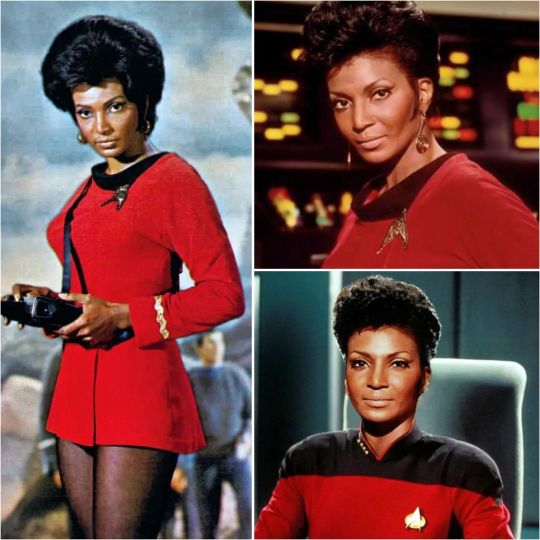
It was announced today that actress Nichelle Nichols famed for playing Communication Officer Lieutenant Nyota Uhura on the original Star Trek series and subsequent movies passed away at the age of 89.
Nichols, in her portrayal of Uhura, was a role model for many African Americans. Not many African American actors could be seen on TV in such a high profile role. Even when Nichols wanted to leave, she was asked by Reverend Martin Luther King Jr to stay in the role since what the show was showing was the future for African Americans. To be equal with not only other races but other beings. Dr. King was a big fan of not only Nichols but of Star Trek as well.
Rest in Peace. Thank you for your grace throughout the years.
#NichelleNichols #StarTrek #NyotaUhura #WomensHistory #WomensStudies #HERStory #AfricanAmericanHistory #AfricanAmericanStudies #BlackHistory #BlackStudies #CivilRightsHistory #CivilRightsStudies #ScienceFiction #SciFi #SciFiTV #TelevisionHistory #History #Historia #Histoire #Geschichte #HistorySisco #SiscoVanilla
https://www.instagram.com/p/CgsEoA-P7Wv/?igshid=NGJjMDIxMWI=
#Nichelle Nichols#Star Trek#Nyota Uhura#Women's History#Women's Studies#HERstory#African American History#African American Studies#Black History#Black Studies#Civil Rights History#Civil Rights Studies#Science Fiction#Sci-Fi#Sci-Fi TV#Television History#History#Historia#Histoire#Geschichte#Historysisco#SiscosFavoriteComics
3 notes
·
View notes
Text
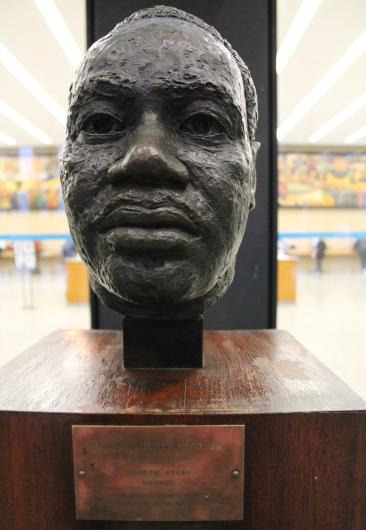
Joseph Stein (American, 1916 - 1977) • Martin Luther King Jr. • 1969 • Bronze • National Portrait Gallery, Washington D.C.
#art#fine art#sculpture#bust sculpture#bronze sculpture#martin luther king#joseph stein#martin luther king day#national gallery d.c.#pagan sphinx art blog#american sculptor#art blog#art history#civil rights history#american artist#american icon
5 notes
·
View notes
Text

I'm very excited to finally announce this sale. Please check out my website if you're interested in buying an original comic page!💛
Fair Fight
#run#runbookone#comics#sale#originalart#hand drawn#illustration#civil rights history#civil rights movement
2 notes
·
View notes
Text
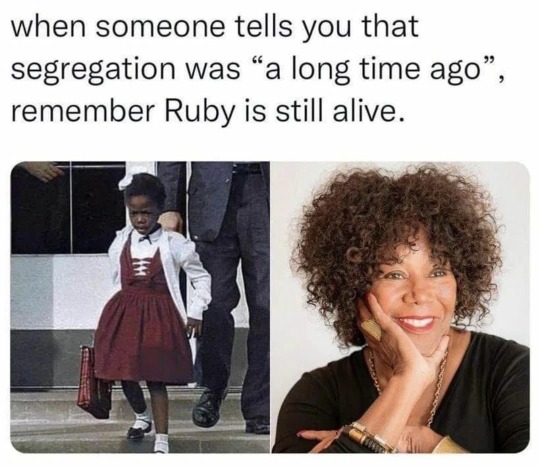
#blackgirlmagic#black history#black excellence#black lives matter#black queen#Blackstrength#afrocentric#black power#segregation#civil rights#black education#ruby bridges
38K notes
·
View notes
Photo
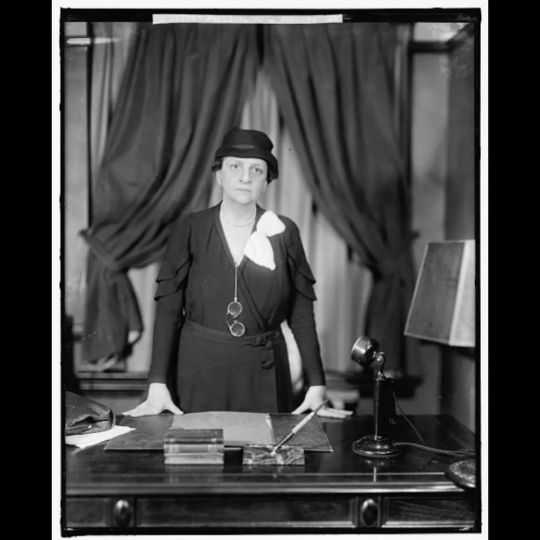
On This Day in New York City History March 4, 1933: Teacher, Women's Rights advocate and New York City and State government servant Frances Perkins is appointed by President Franklin Delano Roosevelt to his cabinet as the Secretary of Labor. In achieving this post, Perkins becomes the first women to hold a Presidential Cabinet position and was the first woman to enter the presidential line of succession. Perkins is the longest serving Secretary of Labor, having held the position for 12 years.
Perkins was influential in the development and application of many New Deal policies dealing with social security, unemployment insurance, federal minimum wage, and federal child labor laws. Perkins also served on the United States Civil Service Commission under President Harry Truman. While on the Civil Service Commission, Perkins advocated for women to be hired as secretaries and stenographer based on their qualifications instead of their physical attractiveness which had been the norm.
Prior to her Washington appointment, Perkins worked with then NYS governors Al Smith and FDR in a variety of commissions where she successfully advocated for women's labor rights. Her stance on labor rights for women was highly influenced by the tragic Triangle Shirtwaist Fire that led to death of 123 women and girls and 23 men. Her efforts led to the passing of a 1913 NYS bill that capped the amount of hours women and girls could work in a week at 54-hours.
After her career in government service came to an end in 1952, Perkins would write a memoir of her time in FDR's cabinet entitled "The Roosevelt I Knew." She would also teach at the New York State School of Industrial and Labor Relations at Cornell University until her death in 1965, at age 85.
#FrancesPerkins #FirstFemaleCabinetMember #WomensHistory #WomensStudies #HERStory #WomensRights #CivilRightsHistory #WomensHistoryMonth #NewYorkHistory #NYHistory #NYCHistory #NYCPolitics #NYPolitics #History #Historia #Histoire #Geschichte #HistorySisco
https://www.instagram.com/p/CpXh6A_OhG9/?igshid=NGJjMDIxMWI=
#Frances Perkins#First Female Cabinet Member#Women's History#Women's Studies#HERstory#Women's Rights#Civil Rights History#Women's History Month#New York History#NY History#NYC history#NYC Politics#NY Politics#History#Historia#Histoire#Geschichte#HistorySisco
8 notes
·
View notes